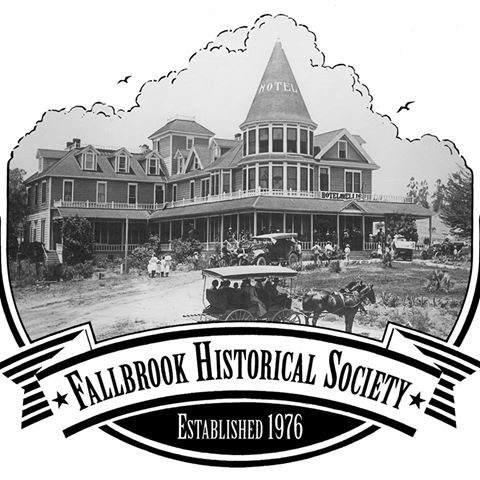Cecelia Njust

It was in 1976 that Cecelia Njust, her husband Carroll, and other proud Fallbrook residents decided to join George Kelsey to form a Historical Society. The group met in the High School cafeteria and other public rooms throughout town, wrote a charter that was approved in April, 1977, elected a Board of Directors with Kelsey as President, and spent the next four years fundraising in hopes of purchasing a building that would become the museum. The whole community attended bake sales and other events in support of the effort to celebrate Fallbrook history. Residents donated historical documents and artifacts which were dutifully catalogued and stored in member’s homes.
By 1981 the group had raised $78,000 and purchased a four-acre parcel at the southwest corner at Hill Street and Rocky Crest. That land had originally been part of the Rancho Santa Margarita Land Grant owned by Mexican Governor Pio Pico. It included an 1895 farmhouse that was run down and in need of attention. Cecelia nearly fell through the floorboards by the fireplace on her first visit, but the group was able to make repairs and move the collection of artifacts inside for display. They learned later that the farmhouse had been built by Civil War hero and Medal of Honor recipient, the Reverend William Pittenger, a true historical bonus!
An enthusiastic Historical Society Board member for the next 40 years, Cecelia was involved in nearly every aspect of the organization, including the construction of the newer two-story museum building and raising “the Barn” on the Heritage Center property. Her husband Carroll supported her efforts in every activity. “I especially enjoyed working on the Christmas Parade, placing the Time Capsules, and interviewing Pioneers to record their life stories. I think the one project with the most lasting impact was recording the old Fallbrook Enterprise Newspapers and local Census Records that went from the 1800’s through the 1960’s,” she said. “The pages were brittle and crumbling and we pieced them together and repaired them so that they could be microfilmed.” Because of that work, more than a century of Fallbrook information was saved. The microfilm was recently digitized and posted on the museum’s desktop computers. Visitors can search through all of the records and sort by keywords or dates to research local events and family history.
Somehow, in addition to all of her work for the Historical Society, Cecelia found time to volunteer as Board member with the Friends of the Library Board, Art Association, Fallbrook Antique Auto Club and the Reche Community Service Club. She was also a supporter of the Fallbrook Land Conservancy. Fallbrook would be a very different place without all of her Pioneering efforts over the decades.
“We have loved living in Fallbrook,” she said. “The community is eager to support good causes. I don’t believe the Historical Society has ever paid for an artifact. Everything in the museum was donated by the community, including the Model-T and the two Model-A Fords.”
